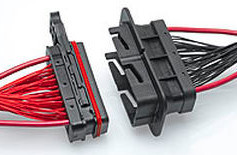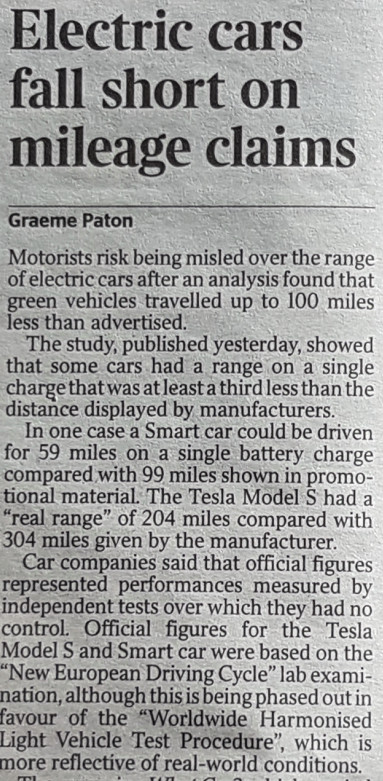This
might be of some interest.
Although it is obvious that this is a project high on spending grant money and low on real life applicability.
It would be nice if they provided some numbers, especially about the weight of the systems
- the diesel generator (which one? 110kw does not really match DA-300, nor CD-135 or CD-155)
- the all-up-weight of the electric motor system (sans batteries)
- the weight of the batteries (2×12kWh, so I guess maybe 150kg in total, uff!)
I suspect not much remained from the DA-40 useable load.
I wonder why they went for the CriCri configuration and how that changed the flying characteristics.
Hybrid can make sense only if the enroute power requirement is well below the takeoff power requirement.
That might be the case in things like surveillance (UAV or manned) but is not the case in any sort of “normal” aviation.
“Pure electric, the aircraft has an endurance of approximately 30minutes. The hybrid system extends this to 5 hours”
So the battery mode is basically useless, and if the engine is in the nose it is likely they are flying the 5hrs at a pretty low power.
Everything in that press release ( local copy ) is standard grant-application lingo, to take advantage of grants being preferentially given to collaborative projects.
Peter wrote:
Hybrid can make sense only if the enroute power requirement is well below the takeoff power requirement.That might be the case in things like surveillance (UAV or manned) but is not the case in any sort of “normal” aviation.
The current ‘normal’ is a consequence of the way the current GA airplanes are designed and operated (have the power, might as well use it; also the main bragging point is speed), which itself is a consequence of the properties of the piston engines (don’t like operating at low %).
An extra clean airplane with longish wings can have lower cruise power requirements (at a cost of somewhat lower cruise speed) – in such case, the main driver for selecting engine power is adequate takeoff and climb performance – which will result in an engine oversized for cruise – so the current ‘solution’ is to shorten the wings and fly faster using most of the available power.
An alternative would be to have the sustainer sized for cruise power (+ a bit more for recharging) and use the battery juice for STOL-like takeoff and super-fast climb (e.g. through icing layers). Given the required battery weight even with modest batteries, this won’t be lighter, but would result in significantly less fuel burn, while having superior performance where it matters most (takeoff and climb).
I mean something like a 4 person aircraft cruising at 150knots on 100hp Rotax, but with 300+hp available for takeoff and climb.
Another case would be an ‘ultralight’ cruising on a cheap 33hp industrial engine, with electric boost to 80-100hp to have safe and pleasurable takeoff and climb experience.
Yeah, right, electric stuff needs to become more common and fall down in price.
Peter wrote:
“Pure electric, the aircraft has an endurance of approximately 30minutes. The hybrid system extends this to 5 hours”So the battery mode is basically useless, and if the engine is in the nose it is likely they are flying the 5hrs at a pretty low power.
Peter wrote:
Everything in that press release ( local copy ) is standard grant-application lingo, to take advantage of grants being preferentially given to collaborative projects.
An extra clean airplane with longish wings can have lower cruise power requirements (at a cost of somewhat lower cruise speed)
Agreed, but you might be looking at flying at say Vbg which is ~95kt for most 150-170kt planes; I am not sure anybody would settle for going that slowly. But yes you can do it with an electric motor; an IC engine would be very inefficient at 30-40% power.
Jets fly close to Vbg and achieve their high TAS by flying high, but that implies pressurisation. But if you built a pressurised DA42 and got it up to FL300, ATC would kick you out. I used to know a guy with a Commander (twin TP, like Adam has) and he said he got sick of it being useless for its intended profile in Europe because he was getting pushed down to FL250 or less.
my belief is that the electric stuff can be much more reliable than the IC mechanical piston machinery
Electronics should last for ever if it never gets warm, and the manufacturing quality is superb (at work we see a ~1000 year MTBF on some stuff, based on actual field data). But I don’t think it is for power electronics, because that gets pretty warm (look at the extensive cooling for the Siemens motor drive electronics) and thermal cycling is a killer.
Also GA is never going to see the sort of R&D investment which the car business gets. There, millions are poured into making crappy and cheap stuff reliable. For example they use really crappy connectors but make them “reliable enough” with o-rings which stop water getting in.

What you get in GA is a load of tinkerers. Hence we got stuff like the Aspen EFD whose failure rate was legendary (probably close to 100%) for the first few years.
The very high power density of batteries/motors makes VTOL possible, so if regulatory requirements keep up you could design for a very high wing loading and a high Vbg to keep the cruise speed up with low power requirements.
I wonder how common this is

It is what one gets with practically all rechargeable consumer items, yet for some magical reason electric cars have been claimed to always achieve full claimed range performance, as well as showing practically zero capacity loss after some years.
It is actually worse for petrol and diesel cars. The same fact – that the fuel they carry can only get ghem so far – is usually expressed as a fuel consumption (miles per gallon or littes per 100 km), and the published consumption figures are completely unrealistic, mostly because the standard cycle used to neasure it is not very realistic, and sometimes because of outright fraud by the manufacturers.
The only difference is that – so far – recharging a car takes longer, can only happen at very few olaces (compared to refuelling) and hopefully at home, and the penalty for getting it wrong is huge.
Yes, and even bigger with a plane 
Cobalt wrote:
The only difference is that – so far – recharging a car takes longer, can only happen at very few olaces (compared to refuelling) and hopefully at home, and the penalty for getting it wrong is huge.
Being able to charge at home, typically overnight, is a must for electric cars. You have to remember that 95% of all driving is less than 100 km (from home and back). Don’t remember exactly if the number was 95 or 98 or something, but it doesn’t make a difference. Charging at the fast chargers is only done for longer trips. In Norway, there are loads of them now, more in fact than gas stations, because they are much easier and cheaper to set up, and they can be set up anywhere. A gas station is a complex and expensive thing, with lots of safety and environmental issues.
Having driven electric for 4 years now, the first thing you notice, is you never visit gas stations anymore (or fast chargers for that matter). It is a direct result of the 95% number. Several companies wanted to make big money on fast charging. People were supposed to charge instead of filing the tank. It turns out it has not been halleluja exactly. Again the 95% number. Fast chargers are used only 5% compared with gas stations. Nobody fills up the tank with gasoline at home. Everybody has to use gas stations.
Some have chargers at work also (I have). This does much of the same trick, but it’s mostly redundant, because people still top it up at home during the night. You want the car to be nice and warm when you start, and that is done most efficiently when it is plugged in.
Comparing electric cars and fossil cars is an orange vs apple comparison. The very basic practicalities are so different that it’s of no use. This completely eludes most people (those who have never had an electric car). They only see two cars. One with fossil fuel and one with electric fuel, and everything else being equal.
The same thing will happen within aviation. Only the differences here will be much larger. Electric aviation will open up new markets with solutions we have never seen before.
My 1998 Ford Escort 1.8 Estate had petrol figures very close to the claimed figure, measured over years.
My 2012 Vauxhall Astra 1.6 Hatchback, driven over the same routes, has 6 mpg less than the Escort, but the book figure was 6 mpg more.